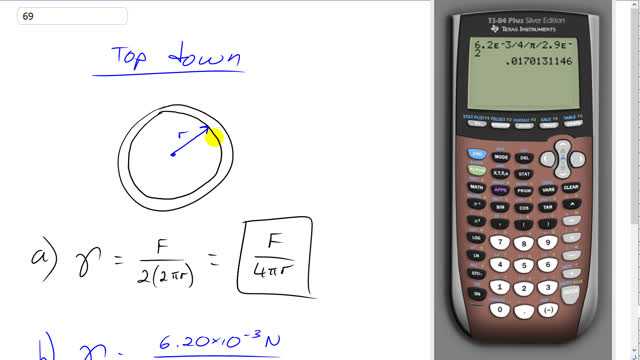
The surface tension of a liquid can be determined by measuring the force needed to just lift a circular platinum ring of radius from the surface of the liquid.
- Find a formula for in terms of and .
- At , if and r = 2.9 cm, calculate for the tested liquid.

In order to watch this solution you need to have a subscription.
This is Giancoli Answers with Mr. Dychko. We have to make a couple of assumptions here: number one is that this platinum ring is a negligible mass so that the force you know, involved in... the amount of weight of it is not gonna be significant and the only force that we are dealing with is to counteract the force exerted by the surface of the liquid here. So and that also kind of implies that the thickness of the ring is really small so that when we calculate the length of surface that's exerting a force on this ring, we can assume that the inside circumference of this ring and the outside circumference are essentially the same; since the ring thickness is so small, they have basically the same radius. So with all those assumptions involved, we'll say that the force is gonna be divided by 2 times the circumference of the ring because they are both the inside and the outside perimeters involved in having forces exerted on them. So it's the same idea with the figure... (whatever where you had that U-shaped wire)... 10-34 there's both a top and bottom surface on that wire there in this case, there's the outer perimeter and the inner perimeter that are both experiencing a force due to the surface tension and so we have surface tension then is the force divided by 2 times the circumference so that's F over 4πr. Then we plug in some numbers: 6.2 times 10 to the minus 3 newtons divided by 4π times 2.9 times 10 to the minus 2 meters and that gives 0.017 newtons per meter surface tension.